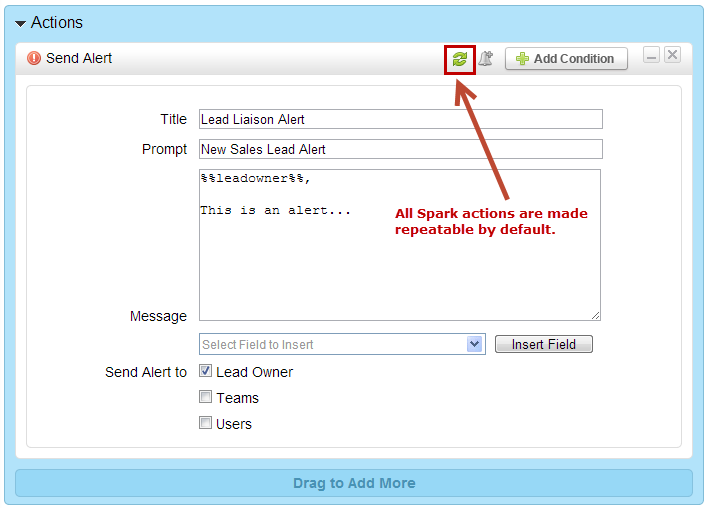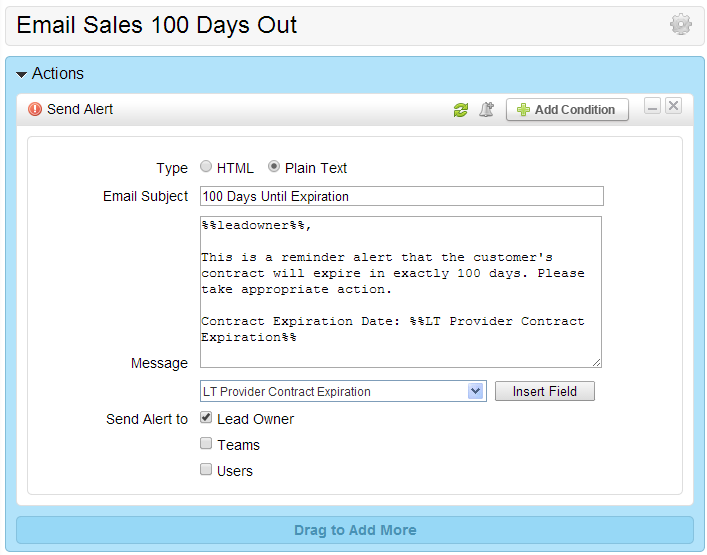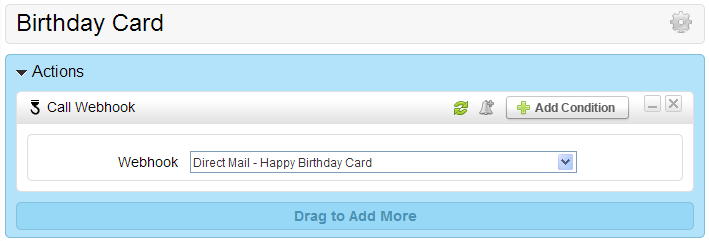Overview
Sparks are events that happen in the future that can set off (ignite) a series of actions. Common events are visits to a certain page, web form submissions and more.
Types of Sparks
There are two types of Sparks, a Real Time and Daily Spark. A Real Time Spark triggers a set of actions based on an event such as a form submission, email open, website visit, etc. A Daily Spark triggers a set of actions based on a day in any calendar year. Use cases for Daily Sparks are explained in more detail below.
Creating a Spark
To create a Spark do the following:
- Go to Workflow > Spark
- Enter information on the Configure Spark popup (see screenshot below)
Configure Spark options:
- Name = Name of the Spark
- Trigger = Type of the Spark. Many future events, such as clicking a link in an email, visiting a specific page, making a return website visit, and much more can be used as a Trigger. Choose Real Time to setup a Spark based on an event and choose Day to setup a Spark based off of a Date or Date/Time value in the database.
- Criteria = Based on the Trigger, will switch from future events to criteria in the database that has a Date or Date/Time data type.
- Options = Checking this box allows the user to select more criteria (demographics, etc.) to further refine when a Spark is ignited. Displayed only for a Real Time Trigger type.
- Description = A description of the Spark
All Spark actions are repeatable by default:
Creating a Day Trigger
Daily Triggers or Day Triggers use a date or date & time value stored in the database to launch a series of actions. Here are some examples of when a Day Trigger might come in handy:
- Sending a postcard, email or text message a week before someones birthday.
- Sending reminders to your sales team (or the lead owner) when a customer's contract is about to expire.
- Sending reminders to your sales team if a customer has a contract that's about to expire with another vendor.
- Schedule reminders for your support team or sales team to check in at various intervals after a contract begins or before it ends.
Works for Any Criteria with Date or Date & Time Data Type
Any Lead Liaison Standard or Custom field with a Date or Date & Time Data Type value may be used with a Day Trigger.
Example: Internal Reminder
In the example below we'll setup a Day Trigger to send the salesperson an internal notification when a customer's contract is 100 days out from expiration:
- Create a new Spark and select Day next to Trigger.
- When Day is selected from the drop down a "Criteria" field shows up below the Trigger field with a list of all criteria with a data type of Date or Date & Time.
- Select the criteria you'd like to use as the Trigger. In this case, we'll use "LT Provider Contract Expiration".
- Set the filter up as shown in the screenshot below:
- Click the Save and Define Actions button
- Add the Send Alert action to the canvas
- Notice that any Lead Liaison Standard or Custom field can be inserted into the alert, including the Date and/or Date & Time value you're using to trigger the action
Example: Birthday Postcard
In the example below, we'll send only our customers a postcard about one (1) week prior to their birthday.
- Create a new Spark and select Day next to Trigger.
- When Day is selected from the drop down a "Criteria" field shows up below the Type field with a list of all criteria with a data type of Date or Date & Time.
- Select the criteria you'd like to use as the Trigger. In this case, we'll use "Birthdate".
- Set the filter up as shown in the screenshot below. We differentiate customers from prospects, partners, and others using the "Customer Type" field so we'll add that as additional criteria:
- Click the Save and Define Actions button
- Add the Webhook you created to send a postcard to the canvas. More on sending direct mail using webhooks can be found here.








